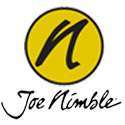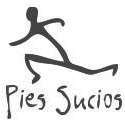No products
Prices are Management included

Running the Minimal: 100-Up Exercise
Today, where huge marketing masks any indication of truthfulness, it is difficult to find the way to the true. That is why if we listen or read minimalist running , we surely confuse it with a passing fad whose main foundation is to run the least, or with some gadget of those who announce in the telecasts that promises to get a herculean body with 10 minutes a day of exercise.
Well, this article is about that, about running the least. Given the weather conditions, where cold, rain or wind deprives us of the desire to leave outside the controlled environment of our home to release our legs, the exercise called 100-up is becoming fashionable. Like much of what appears new, it comes from the United States, but its origins go back many years, in the England of 1874. It tells the History, or perhaps the legend, that a young person of 16 years named W.S. George did not have free time to run, since he worked as a chemist apprentice. That's why, at lunchtime, he performed an exercise that consisted of running without moving from the site, as fast as possible. After a year, where he only did this practice, young George became the fastest amateur in running the distance of the Mile in England, and five years later it broke all the records between the average and the 10 miles.
The 100-up exercise tries to repeat 100 times the movement we perform when we run, but without moving from the site. The complexity is to have to raise your knees to hip height (keeping the femur parallel to the ground) as fast as possible and reach 100 strides (50 with each leg). The support should be performed under the hips and the movement of the arms should be matched to that of the legs. Do not forget that the body should be slightly tilted forward from the ankles and that the heels should touch the floor gently. That is to say, it is a matter of running with the technique that we would use if we were barefoot or in minimalist sneakers, but without moving from the site. In the following video we can see it.
Although a priori may be simple, when the body loses some of its initial vitality, the balance is difficult to maintain and the height of the knee to the hip as well. Undoubtedly, this exercise is an ideal complement to make a safe and efficient transition, since it works the balance, the elasticity, the stability in the support and the cadence. Another point to evaluate is that the correct repetition of the stroke movement helps to establish the new neuromuscular channels. The body has a strong and durable neurological memory, so it is not uncommon to find minimalist runners landing on heels. If you go very far, a few days ago I was told by a girl who has been a few months of minimalists. He participated in a race and in one of the photographs was discovered landing of heel. Despite the benefits of performing 100-Up exercise skepticism is served, especially when it comes to improving your personal brand only with the realization of the same and more when only 100 repetitions per day during 30 days. Perhaps, if instead of 100 repetitions were made all that can be done for an hour, you could repeat the successes that George achieved in the nineteenth century, because who says that instead of 100 did not throw all the time running in the Site?
Blog categories
- Running Technique
- Shoes Review
- Scientific studies
- Nike and minimalist shoes
- Morton neuroma
- Bunions
- Podiatrists' opinion on...
- Claw toes, crowded toes,...
- Flat feet
- Runner's injuries, runner's...
- Sprained feet, ankle sprains
- Footwear for wide feet or...
- Heel and back pain
- Children's feet and...
- Circulation and bone...
- Knee pain, osteoarthritis,...
- Plantar fasciitis
Últimos Comentarios
Erik Cuellar
The Camino de Santiago begins at your feetErik Cuellar
The Shoes that Will Make You Pray Less on the...María Isabel
The love-hate relationship between your big toe...Antonio Fraile
'But what are you telling me'






















